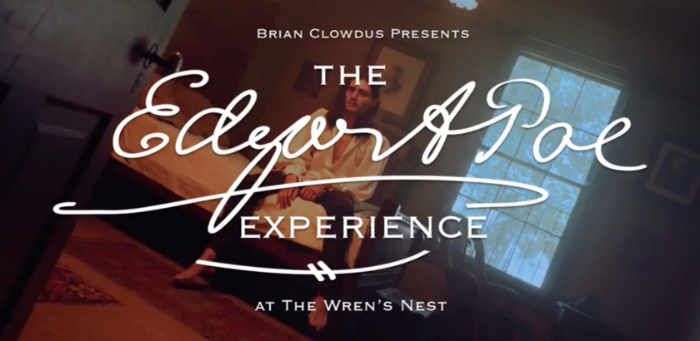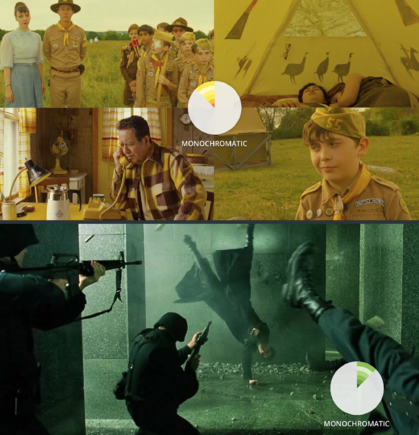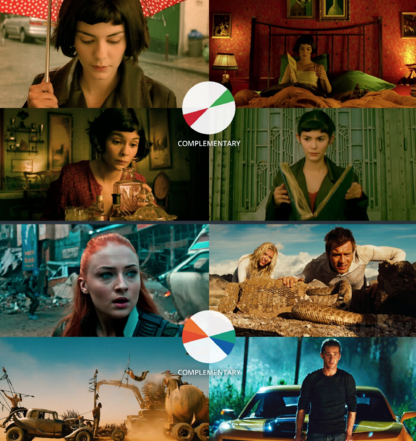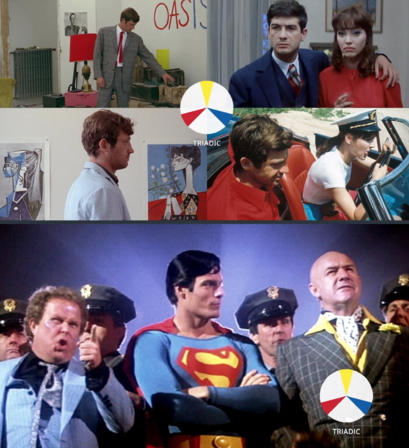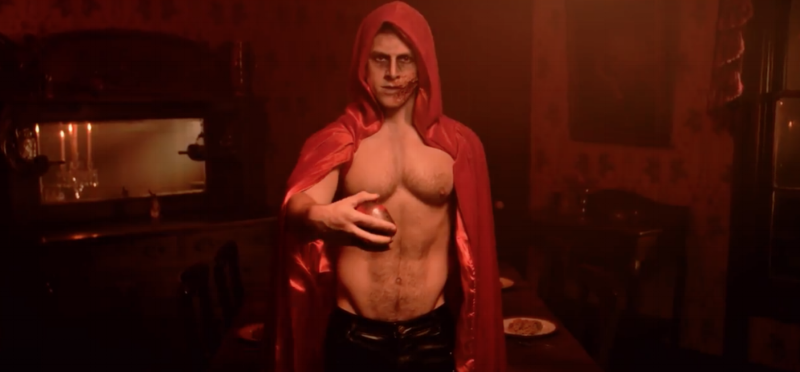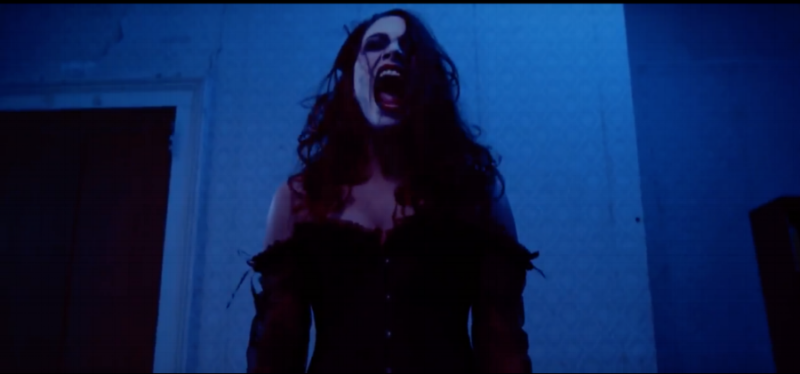Hey Trove friends, thank you as always for tuning in to our blog here at Trove! This week we have been working with color! How so? You may wonder. Well… we’ve just finished working on a haunted house trailer based off Edgar Allan Poe’s classic stories. Some of the stories featured are “The Tell-Tale Heart”, “Fall of the House of Usher,” “Mask of Red Death,” and “The Raven.” What’s awesome about working on a trailer with known stories is that you can push mediums like color to enhance the narrative.
Color is important because it affects viewers emotionally, psychologically, and even physically. Perfect for anything horror related! Color can build harmony but also can create tension depending on what color scheme you use. Some of these color schemes consist of monochromatic, analogous, complementary, and triadic.
Briefly, what are those color themes? Monochromatic is one color hue that is altered by the change in tones and shades; creating an awesome use of contrast. Analogous is when you use a set of colors that are right next to each other on the color wheel; which is pleasing to the eye. Complementary colors are opposite colors on the color wheel; and are used when there are internal conflicts. Triadic is the use of three colors on the color wheel evenly spaced; they do not have to be right next to each other. It is important when using these color theme that one color is more dominant in the scene and the other two colors are complimenting the more dominant color.
Image Examples
Specifically, color can draw your eye to a certain subject. Directors tend to do this in a story because they have a message they want to send to viewers.
We created a scene from the “Tell-Tale Heart” and most of the room is yellow. In color psychology yellow can be used to indicate intensity and frustration. As viewers are focusing on certain actions in the video they get the impression that the character is frustrated and the situation is intense.
In the story itself, the author is going insane as he’s telling the story of how he killed a man. Therefor we used yellow and show aspects like the door knob shaking to give the impression that things are about to break through the surface, making viewers feel an adrenaline rush.
Certain colors can be used for characters to indicate their personality type or their intentions. In another scene we have the villain from the “Mask of Red Death”; and he’s in a red cap, blood on his face, and holding a bloody apple.
In the scene the villain is standing in front of a dinner table and smoothly shows the audience the apple. At first you might not realize that the apple has blood on it. Although you don’t see the blood, the audience knows something is not right due to the red hue of the room. The red tell us that there’s a sense of desire but that he’s simultaneously dangerous.
After seeing the villain and maybe feeling uneasy, you look at the bloody apple, which is meant to be a distraction right before the lil’ crow caws his head off and gets you truly shook. The gestures along with the color distract the audience by showing them a danger that they may be trying to discern, then as they are mid thought -- CAW!
The last scene we’re going to talk about today is from the “Fall of the House of Usher.” There’s a dead girl who’s in a blue tinted room. In the scene there are cracks in the ceiling coming apart with plaster falling down. The dead girl’s hair flies up and she starts screaming “Mad Man, Mad Man!”
Blue is the color of a dead body and in this case signifies death. It can also signify calmness, but the scene is not calm. Our director, Ben Wade, wanted to use a little reverse phycology by making the scene feel as though it may be calm, but it’s revealed that she’s manic and dead. The hope was to leave the viewers feeling uncomfortable and on edge as she screams.
The goal of the whole trailer is to take you on a literal mind trip through Poe’s subconscious, eliciting feelings of discomfort and suspense along the way. What would we do without color to strengthen the emotional and psychological reaction?
At Trove we believe the use of color is important in film and video. The use of color can create an aesthetically pleasing video, and it can also strengthen your storyline. To learn more about color, check out our blog post titled "Hue Knows What I Mean: Color in Film and Video Production".You can check out our Edgar Allen Poe trailer here.
